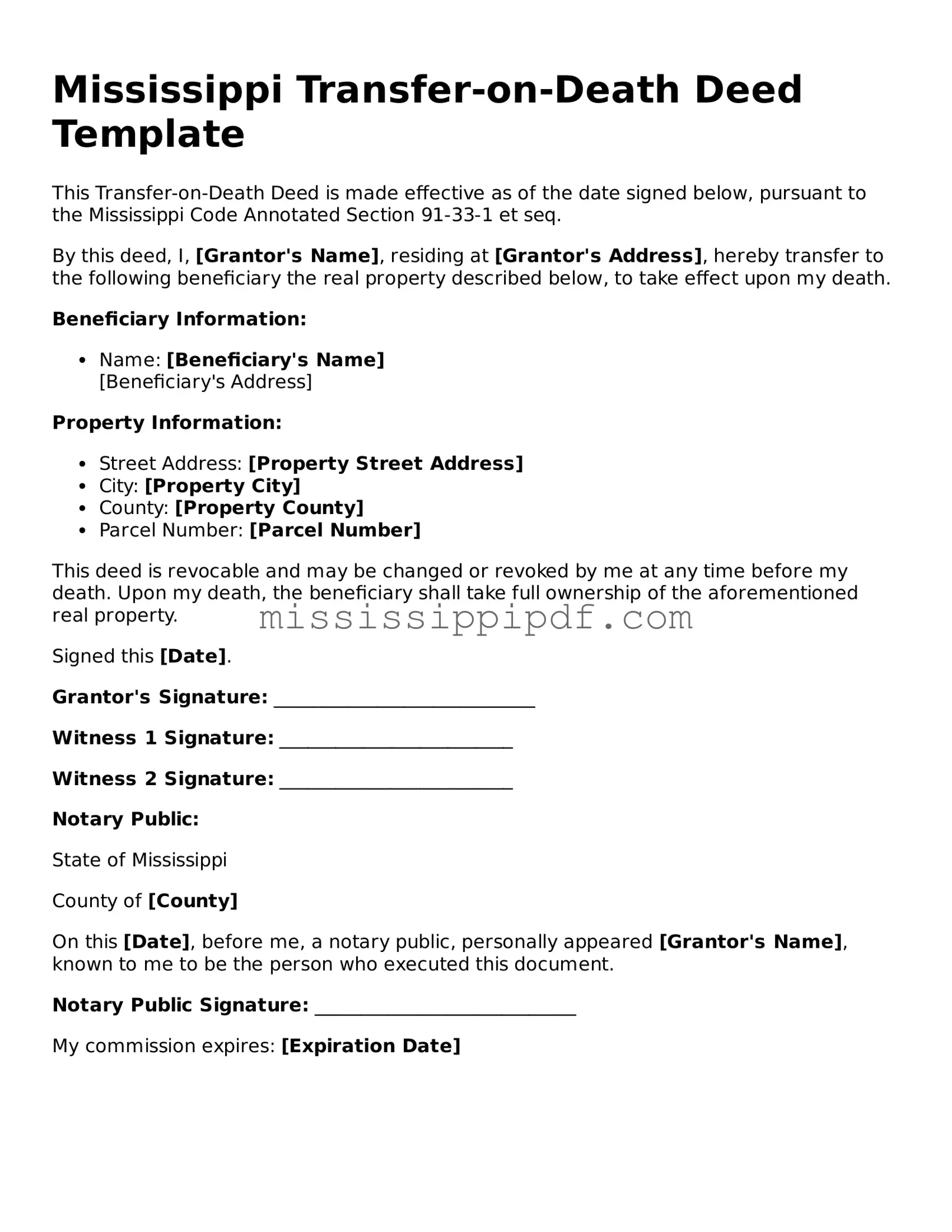The Mississippi Transfer-on-Death Deed (TODD) form is similar to a Living Trust. A Living Trust allows individuals to transfer their assets into a trust during their lifetime, which can then be distributed to beneficiaries upon their death. Both documents facilitate the seamless transfer of property without the need for probate, ensuring that the decedent's wishes are honored while minimizing delays and costs associated with estate settlement.
Another document comparable to the TODD is the Last Will and Testament. While a will outlines how a person's assets will be distributed after their death, it typically requires probate. In contrast, the TODD allows for the direct transfer of property to beneficiaries outside of probate, providing a more efficient means of asset distribution.
The Beneficiary Designation is also similar to the TODD. This document allows individuals to designate beneficiaries for specific accounts, such as retirement accounts or life insurance policies. Like the TODD, beneficiary designations bypass probate and ensure that assets are transferred directly to the named individuals upon the owner's death.
In the realm of motorcycle ownership, understanding the necessary documentation is vital; for instance, the Arizona PDFs provides essential templates that can aid buyers and sellers in accurately completing a Motorcycle Bill of Sale, thereby ensuring a clear and lawful transfer of ownership.
A Joint Tenancy with Right of Survivorship agreement shares similarities with the TODD. In this arrangement, two or more individuals hold title to a property together. Upon the death of one owner, the surviving owner(s) automatically inherit the deceased owner's share, avoiding probate. The TODD serves a similar purpose by allowing property to pass directly to designated beneficiaries.
The Enhanced Life Estate Deed, often referred to as a Lady Bird Deed, is another document that resembles the TODD. This deed allows property owners to retain control over their property during their lifetime while designating beneficiaries who will inherit the property upon their death. Like the TODD, it avoids probate and simplifies the transfer process.
A Transfer-on-Death Account (TOD Account) is akin to the TODD. This financial account allows individuals to name beneficiaries who will receive the account's assets upon the account holder's death. Similar to the TODD, the transfer occurs outside of probate, ensuring a quick and straightforward transition of assets.
The Assignment of Property Rights document can also be compared to the TODD. This document allows individuals to assign their property rights to another party, effective upon their death. Both the Assignment and the TODD facilitate the transfer of property without the complications of probate, making the process smoother for beneficiaries.
The Family Limited Partnership (FLP) shares characteristics with the TODD as well. In an FLP, family members can pool their resources and manage assets collectively. Upon the death of a partner, their share can be transferred to heirs without going through probate, similar to how a TODD allows for direct transfer of property to designated beneficiaries.
Lastly, the Power of Attorney document, while not directly comparable in function, does share some similarities with the TODD in terms of control over property. A Power of Attorney allows an individual to designate someone else to manage their affairs, including property, during their lifetime. While it does not facilitate post-death transfers like the TODD, both documents empower individuals to make decisions regarding their property and ensure that their wishes are respected.
